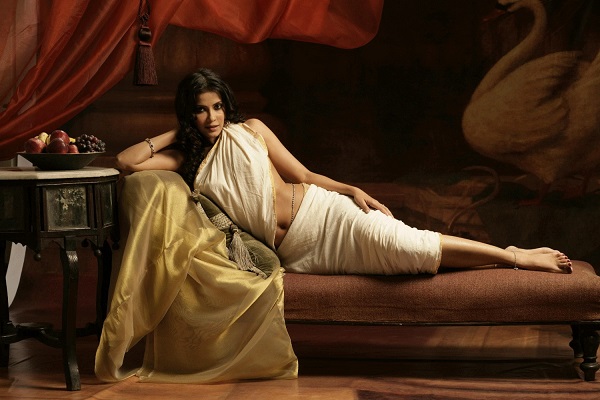Along with the records of M S Subbalakshmi,almost every family had them. Saraswati Devi and her peacock, Mahalakshmi on her lotus, Shiva-unusually moustached – with Parvati, holding their children on laps, Sita and Rama at their coronation, with loyal brothers behind, and an adoring Hanuman at their feet.
Growing up in a Tamil household, one was surrounded by these images. Then the stories; a pining Damayanti and her swan, Shakuntala with her friends, Menaka taking Shakuntala away, Raja Harishchandra’s wife and son being sold in the marketplace…for me, these paintings were just illustrations of some terrific tales.
It was only when I grew up that I realized all these, and more, were from the inexhaustible brush of Raja Ravi Varma, who is credited with introducing the European style to Indian painting.
Yesterday, watching Rang Rasiya, Ketan Mehta’s ambitious biopic of the painter, I was reminded not so much of the Travancore royal as of another painter in our lifetime who lived and worked in an atmosphere akin to this. With exhibitions interrupted, paintings destroyed, art misunderstood, and a life ended outside of his beloved India, he held the conscience of a country in his slender fingers. And we failed him; each one of us failed one of the greatest artists of our times.
So despite a five-year delay over censorship issues, Rang Rasiya is timely. In an atmosphere of benevolent dictatorship, it serves to remind us that by garrotting art of any kind – music, literature, theatre or dance – we deny ourselves the right to see and read and judge for ourselves; we simply give up like children, allowing a patriarchal system to decide what’s good for us. In the process, if we don’t see an Anand Patwardhan film, or we cannot read a Doniger, so be it.
Only, I wish it had been a better film. In every respect it jarred. At least the tedious Maya Memsaab had wonderful music to redeem it. Here the music is awful , and the story is worse. The trite courtroom drama, the loud auction conducted before baying crowds , the hurried yatra through India without a pause for reflection, the smarmy business partner, the Hindutva brigade spouting cheap tirades, the exploitative aunt; it was third rate. Not worthy of the oeuvre of the director who gave us Bhavni Bhavai, Holi and Mirch Masala. This film is more in the class of the recent Mangal Pandey.
Only the excellent performances by Ranjit Hooda, Nandana Sen and Vipin Sharma lift it somewhat. Among all these jarring notes was one more. Seeing Nandana Sen’s asymmetrical (though fascinating) face transposed on the familiar images. Nandana holding a veena, Nandana in a crown, Nandana watching in horror as Ravana slays Jatayu. It all felt a bit weird.
And yet, therein was the essence of the film. By transposing a real woman of this photoshopped age, onto the ‘holy’ images we grew up with, Mehta has reminded us of the lines that blur reality and image; or of the world that inspires the painter, or of the possibility of finding a Nala in everyman, or a Damayanti in everywoman. And a Raja Ravi Varma all over again.






